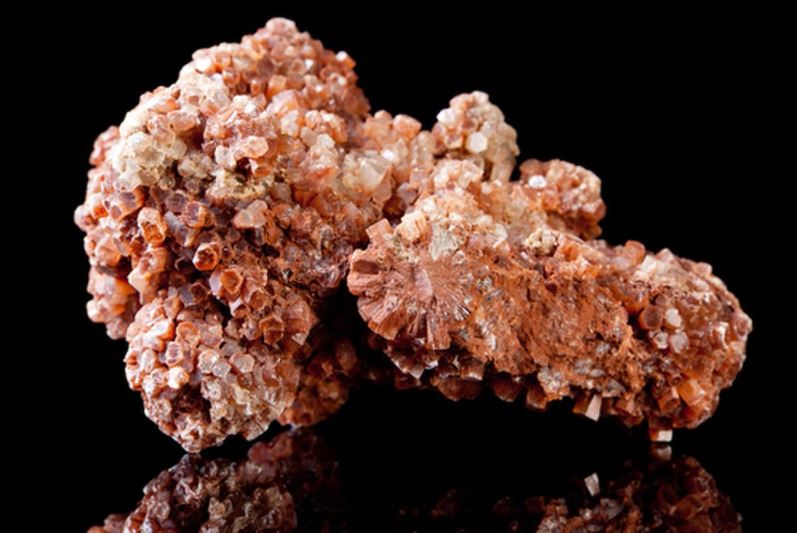Ammonium metavanadate is an important inorganic compound with the formula NH₄VO₃. It is a white to yellow crystalline powder, typically used as an intermediate in the preparation of vanadium compounds. Due to its role as a source of vanadium in various oxidation states, this compound is significant in metallurgical processes, analytical chemistry, and material science. One of its primary uses is in the production of vanadium pentoxide (V₂O₅) — a widely used compound with catalytic and industrial relevance.
This article explores the chemical behavior, decomposition pathway, and practical applications of ammonium metavanadate, with particular emphasis on its use in obtaining V₂O₅.
Chemical Composition and Physical Properties
Ammonium metavanadate is composed of ammonium ions (NH₄⁺) and metavanadate ions (VO₃⁻). It is usually obtained as a fine powder that is sparingly soluble in cold water but more soluble in hot water. The compound tends to be more stable in mildly acidic or neutral solutions, but it can hydrolyze in strongly acidic or basic environments.
Its structure consists of VO₄ tetrahedra linked into chains or layers, depending on the crystalline form. The ammonium ion balances the charge of the metavanadate ion, enabling the formation of solid salts.
Thermal Decomposition and Formation of V₂O₅
One of the most important chemical transformations involving ammonium metavanadate is its thermal decomposition. When heated, it undergoes a multi-step decomposition process, ultimately yielding vanadium pentoxide (V₂O₅), a compound with broad catalytic utility.
The overall decomposition reaction is typically represented as:
2 NH₄VO₃ → V₂O₅ + 2 NH₃↑ + H₂O↑
This reaction begins at temperatures above 200°C and completes near 400°C. The evolution of ammonia and water vapor during this process is accompanied by the formation of an orange-red solid — V₂O₅. This solid is collected and used directly in catalytic converters, glass coatings, sensors, and energy storage devices.
The advantage of using ammonium metavanadate for V₂O₅ synthesis lies in its purity, ease of handling, and relatively low decomposition temperature compared to other vanadium precursors.
Industrial and Metallurgical Applications
1. Precursor to Vanadium Pentoxide
As mentioned, ammonium metavanadate is a primary precursor in the production of V₂O₅ compound name, which is extensively used in:
- Catalysts for the oxidation of SO₂ to SO₃ in sulfuric acid production.
- Ceramics and glass, where vanadium oxides impart desirable coloration and thermal properties.
- Battery technology, especially in vanadium redox flow batteries.
The formation of V₂O₅ from ammonium metavanadate is an efficient and scalable process used in many industrial settings.
2. Metallurgy
In metallurgy, ammonium metavanadate is used to introduce vanadium into steel and alloys. Vanadium improves the hardness, strength, and corrosion resistance of steel. The compound is either directly reduced to metallic vanadium or converted into V₂O₅, which is then reduced using calcium, aluminum, or other reductants.
3. Analytical Chemistry
Ammonium metavanadate is employed in analytical laboratories as a reagent for detecting the presence of specific ions, such as phosphates, due to its ability to form colored complexes. It is also used in redox titrations and colorimetric assays, where vanadium’s multivalent nature (V⁵⁺, V⁴⁺, V³⁺) is a useful analytical tool.
Environmental and Safety Considerations
Though ammonium metavanadate is useful, it must be handled with care due to its toxicity and potential environmental impact. Inhalation or ingestion of dust can lead to respiratory irritation, nausea, or more severe systemic effects if exposure is prolonged.
As a vanadium-based compound, its release into the environment must be controlled, especially in wastewater and air emissions. Facilities working with NH₄VO₃ typically implement strict environmental safety protocols and material recovery systems.
Personal protective equipment (PPE), including gloves, masks, and eye protection, should be worn when handling the powder. Proper storage involves keeping the material in sealed containers away from moisture and incompatible substances.
Alternative Vanadium Sources
While ammonium metavanadate is one of the more common precursors to V₂O₅, there are other sources such as sodium metavanadate (NaVO₃) and potassium vanadate (KVO₃). However, NH₄VO₃ is often preferred in fine chemical processes due to its relatively low solubility (which allows better control during crystallization) and minimal contamination from alkali metals.
Conclusion
Ammonium metavanadate is a key material in both research and industrial applications involving vanadium chemistry. Its decomposition to form V₂O₅ compound makes it particularly valuable in catalyst production and metallurgical operations. With its rich redox properties and compatibility with a wide range of processes, NH₄VO₃ continues to play an essential role in modern inorganic chemistry.
Its practical relevance spans from laboratory analysis to large-scale metallurgy, emphasizing the importance of understanding its chemical behavior, decomposition mechanism, and safe handling practices. As interest in vanadium-based technologies grows — particularly in sustainable energy and materials science — ammonium metavanadate is likely to remain an important compound in both traditional and emerging applications.





Comments